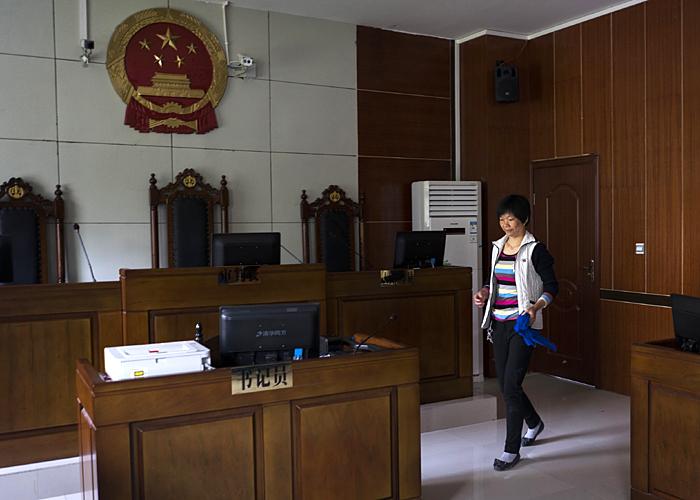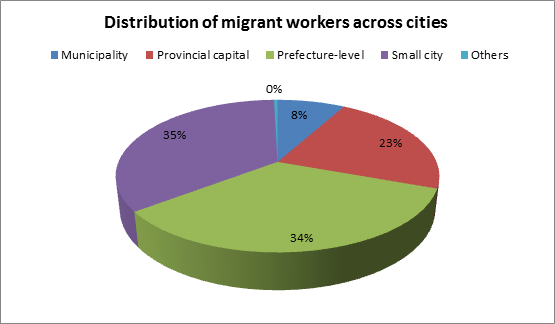After more than a decade working as a delivery man in the southern city of Guangzhou, 55-year-old Zou Xiangfu is heading home. It is becoming increasingly hard for him to make a living: On good day he can earn between 100 yuan and 200 yuan but some days nothing at all. The physical strain of hauling goods up and down stairs is also taking its toll, but Zou’s main concern is for his five-year-old grandson Ziyi.
Ziyi was abandoned by his mother soon after he was born and his father refuses to care for him. Zou, himself a widower, is now the boy’s only carer. Ziyi attends a kindergarten in the industrial suburbs of Guangzhou but because of the household registration (hukou) system that limits access to education and healthcare for rural migrants in the city, getting him into a primary school will be both difficult and expensive.
Zou feels that with more economic opportunities opening up and schooling readily available, it is now time to head back to his home town in the central province of Hubei. He doubts that he will ever return to Guangzhou. Prior to his return, a group of film makers from Hong Kong University’s journalism school, recorded a day in the life of Grandpa Zou and his family.
The Grandpa. Director: Jane Li Linjin, Camera and Sound: Lukas Messmer and Siqi Guan,Editor: Pei-hua Yu
Just across the border from Hubei, in the mountainous rural community of White Horse Village, 40-year-old Xiao Zhang has spent most of her adult life trying to leave. She briefly managed to escape in her twenties, working as maid for rich people in the big city but since she returned to the village to get married in the early 2000s, she has been trapped, raising her two children while her husband worked in a factory 1,500 kilometres away in Beijing.
But while Xiao Zhang stayed in place, the world around her was being transformed. White Horse Village no longer exists; it has been absorbed into the brand new town of Wuxi, which will eventually house a population of 200,000. The rapid development of White Horse Village, intimately documented over the last ten years by the BBC’s China Editor Carrie Gracie, has meant that Xiao Zhang and her husband can now finally earn a decent living at home. They have the cleaning contract for the new courthouse in Wuxi and rent rooms out to newcomers trying to cash in on the booming local economy.

Xiao Zhang in the Wuxi Court House. Photograph from The village and the girl. BBC News
The experience of both families, and millions of others like them, is that while life in major cities like Beijing, Shanghai and Guangzhou has got tougher and more expensive over the last ten years, formerly rural communities in inland China are becoming more and more attractive.
This of course does not mean the end of traditional rural-urban migration. There will always be those who want to make a life for themselves in the big city; not least among them Xiao Zhang’s 11-year-old daughter Yangyang, who says: “I'd rather go to a bigger city than stay here. In a big city, there's more room to make something of myself. I can enrich my knowledge and experience. It's better to get out of here.”
However, there are clear signs that the growth of rural migrant labour is slowing down and that its distribution patterns are becoming more complex. Although the total number of migrant workers has increased steadily over the last decade to stand at an estimated 274 million in 2014, the rate of growth has declined noticeably from 5.5 percent in 2010 to just 1.9 percent in 2014. In addition, more migrants are finding work closer to home: The number of short-distance (本地) migrants increased by 2.8 percent in 2014 to reach 106 million, while the number of long-distance (外出) migrants rose by a slower rate, 1.3 percent, to stand at 168 million.
Moreover, the majority of long-distance migrants, about 69 percent, have moved to smaller or medium-sized cities, those at prefecture-level or below. In 2014, around 23 percent of long-distance worked in provincial capitals such as Guangzhou and Chengdu, while just 8.1 percent worked in major municipalities such as Beijing and Shanghai. See chart below.

Data from 2014 annual survey of migrant workers conducted by the National Bureau of Statistics,
China’s increasingly diverse and fluid patterns of urbanization may hold the key to the gradual or at least partial eradication of the country’s antiquated and discriminatory hukou system. Smaller and, to some extent, medium-sized cities have already started to relax their administrative barriers to rural migration. And as these cities become a more viable option for migrant workers, there are likely to be fewer migrants seeking a place in larger cities. This in turn will make it easier for big city governments to integrate their existing migrant population into their social welfare, healthcare and education systems.
It could well be that the hukou system is still in place a decade or two decades from now. But at least there are now some signs that the system of rural-urban apartheid that the Chinese government has singularly failed to eradicate could eventually just fade into the background so that by the time Ziyi and Yangyang enter the workforce and start their own families, their rural status will no longer be the burden that weighed so heavily on their parents and grandparents.
